|
The Non-Mathematician's Guide To
Basic Valveless Pulsejet Theory
© 2008 Larry Cottrill
by Larry Cottrill 25 Sep 2008
Subtopic 03.03
Power To the Masses!
It is not enough to know that the energy in a valveless pulsejet is communicated throughout
the engine in the form of a wave; for a jet to be a jet, it has to get some mass moving, and fast!
So, how do we get from acoustic wave motion to the actual mass motion needed for propulsion?
A beginning pulsejet hobbyist might say something like, "Well, the air mass is pushed through
the pipe by the pressure wave." Of course, there has to be a sense in which this is true
enough, but it sounds as if he's saying that the wave is acting on the air as a mechanical
piston would. This cannot be an adequate explanation, because we already know that the wave
in fact moves through the air in the engine! The question naturally arises, if the wave
moves freely through the air, how can it push it around? This paper is an
attempt to show the exact mechanism by which the pressure wave causes (or alters) the motion of
the air mass within the device, as well as altering air density and temperature, purely as a
result of its passage through the air mass.
To study this Subtopic, click on the following Section links, in the order listed:
Section 03.03.01:
A Frontal Assault
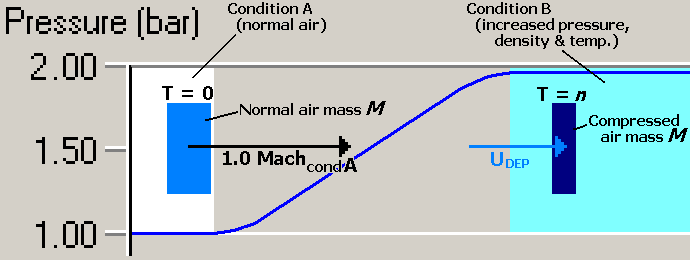
Pretend for a moment that we can move along with the advancing pressure wave;
we would then view the pressure wave front as "stationary". Pretend also that we can see a
small sample of air mass and view what it does over some space of time ...
Section 03.03.02:
Putting On the Pressure
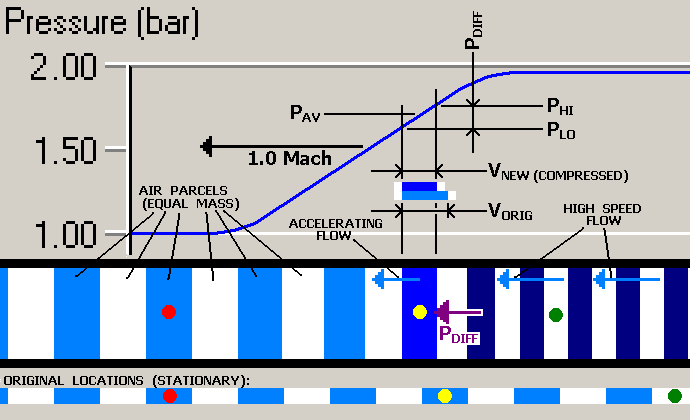
Now we can look at things in a more conventional way, seeing the wave front as
moving at Mach 1 speed through something resembling an engine pipe. What we see here
is a magnified view of exactly how the changing pressure actually stirs air mass into
motion.
Section 03.03.03:
Letting Up
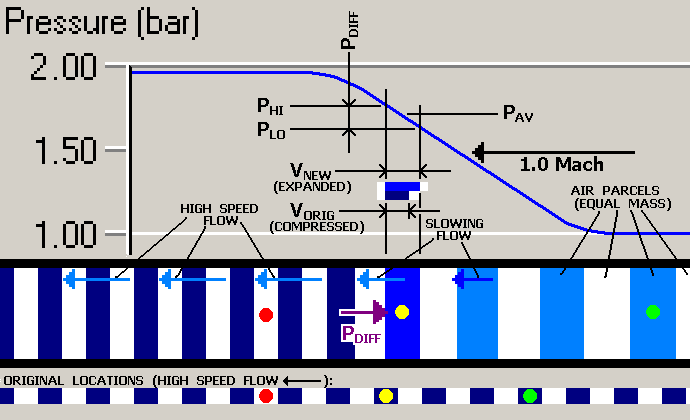
The odds are strongly against getting air pressure to stay above normal
indefinitely in an acoustic device like a pulsejet, so now it's time to look at the
"trailing" pressure front, i.e. descending pressure. This is a case where "reversability"
applies, and it turns out that this is, indeed, exactly the opposite action to what we
just saw ...
Section 03.03.04:
Air Flow Lite
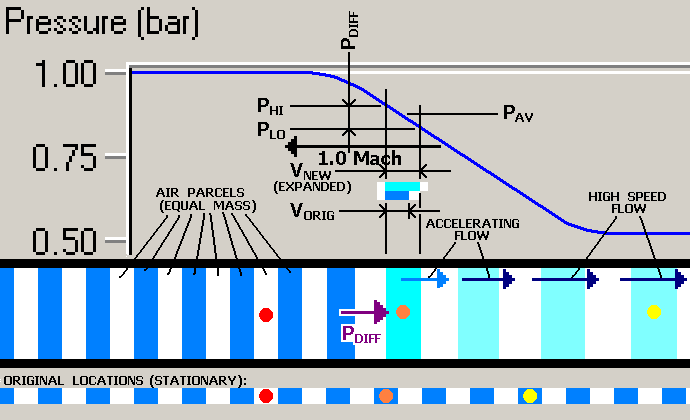
Our final "microscopic" example illustrates a couple of additional kinds of
actions that a wave can do (although the underlying physical principles are exactly the
same, of course). Here we see that we can just as easily have a low pressure wave as a
high one, and we also see that expansion doesn't stop when we get to a "normal" air
condition ...
Section 03.03.05:
On Further Reflection ...
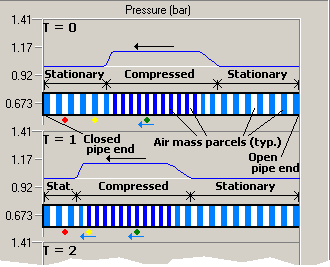
Now we'll start to look at wave and mass motion behavior at a more "macroscopic"
scale. Here is a simplified example of a very common, but quite interesting, phenomenon:
the positive reflection of a pressure wave. We will assume a straight pipe vessel with a
closed end at the left and an open end at the right. All the contained air starts out
stationary in the pipe ...
Section 03.03.06:
You Gotta Know the Rules
From the observations made so far, I derive a simple set of rules for air moving -- at a
minimum, these are the facts you should now understand after studying this Subtopic ...
Go back to select another
subtopic
Next Subtopic: ? ? ?
|